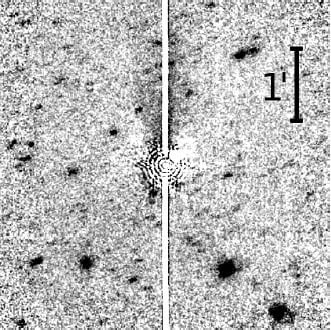
An infrared image of the Near-Earth Object and comet, Don Quixote, showing its newly discovered tail. The very bright core of the comet has been masked out (although leaving a bright stripe, as is normal in these cases) to reveal the tail in the upper part of the image. Background stars can also be seen, along with a fiducial dimension marker indicating about 50,000 kilometers at the distance of the comet. Credit: NASA-Spitzer and CfA
Using data from the Spitzer Space Telescope, CfA astronomers discover comet-like activity in Near-Earth Object Don Quixote.
Near Earth Objects (NEOs) are asteroids or comets whose orbits sometimes bring them close to the Earth’s orbit. An NEO could therefore someday collide with the Earth — giving them considerably more parochial interest than most objects in astronomy. The 1908 Tunguska event, for example, that flattened over 2,000 square kilometers (770 square miles) in Russia was by some basic estimates caused by an asteroid only 60 meters (200 feet) in diameter. The asteroid that struck Siberia last spring (the Chelyabinsk meteor) was only about 40 meters (130 feet) in diameter. While it is relatively easy to detect an NEO in visible light by watching its movement across the sky from night to night, determining its size is more difficult. This is because the optical brightness of an NEO is the result of two factors, its size and its reflectivity. CfA astronomers have for several years been using the IRAC infrared camera on Spitzer to measure the infrared light emitted from NEOs, and modeling the flux to determine the reflectivity and thus the sizes of NEOs.
NEOs are thought to originate from collisional fragments of objects in the asteroid belt beyond the orbit of Mars, and over 10,000 NEOs are known today. Short-period comets can also be NEOs, Unlike the asteroids, these comets most likely originated in the Kuiper belt, a reservoir of icy bodies outside the orbit of Neptune. Their orbits are disturbed as a result of gravitational perturbations with the giant planets, and some end up as NEOs. As they get closer to the Sun these comets become active and produce comae and tails, as expected for comets, but the activity is significantly briefer than their orbital lifetimes near the Earth which are estimated to last tens of millions of years. As a result, it is very likely that the NEO population being studied includes a significant number of extinct comets. So far 160 of them have been identified.
The NEO asteroid Don Quixote was discovered in 1983, and infrared and optical measurements indicate that it is big: about 18.7 kilometers (11.6 miles) in size, making it the third largest known NEO. Its reflectivity, and its particular orbit, suggested to astronomers that it was actually an extinct comet. CfA astronomers Joe Hora and Howard Smith, together with a team of colleagues, used Spitzer to study it. Although it is so large and bright that it had already been measured in the infrared, the scientists wondered if the more sensitive Spitzer measurements could discern something about its putative cometary nature. After careful processing of the comet’s image, which was so bright in the infrared that it virtually blinded the camera, the team discovered a tail to this comet extending about 100,000 kilometers (62,000 miles). From the infrared color of the tail, the team also concluded that the infrared light is largely produced by carbon dioxide gas being emitted from the comet’s surface at a rate of about 7,000 liters (1,850 gallons) per second. The result, besides highlighting the advantages of more sensitive observations of known bright asteroids, suggests that carbon dioxide ice can remain frozen in near-Earth space over a very long time.
Reference: “The Discovery of Cometary Activity in Near-Earth Asteroid (3552) Don Quixote” by Michael Mommert, Joseph L. Hora, Alan W. Harris, William T. Reach, Joshua P. Emery, Cristina A. Thomas, Michael Mueller, Dale P. Cruikshank, David E. Trilling, Marco Delbo and Howard A. Smith, 2 January 2014, The Astrophysical Journal.
DOI: 10.1088/0004-637X/781/1/25
PDF


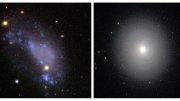
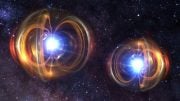
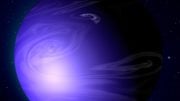

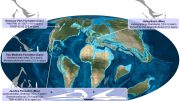

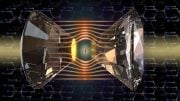
What about the enormous asteroid I seen fly right over Edmonton, Alberta, Canada on October 11, 2013 at 6:52 pm. I estimate it’s size as being atleast hundreds of miles in diameter. It was also definitely in a collision because it was missing three huge pieces. It was a sphere at one time. In order for it to be a sphere it has to be atleast 400 to 500 miles in diameter in order for its gravity to shape it into a sphere. I cannot be the only one to have seen it. I watched it for a half an hour. It came out the dark in the Northeast when I first spotted it as being a enormous blacker than black object on the horizon. I watched it slowly arcing until it was nearly right over my head. I said to myself if this enormous object keeps traveling West the Suns rays should light it up. Well I wasn’t disappointed it lit up as bright as the moon. WOW it’s an asteroid and it continued to arc West until it was just a pin point of light on the horizon. This arcing was due to the Earth’s rotation and orbit. I have detailed info